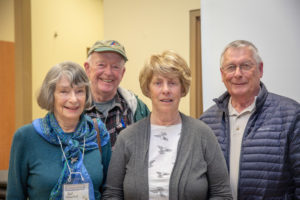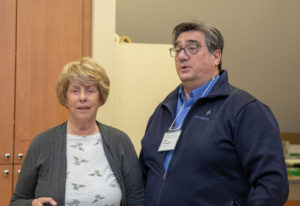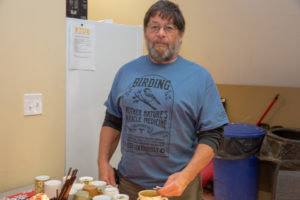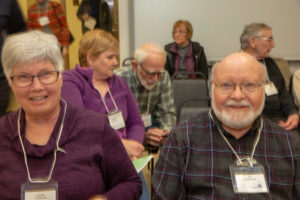If you are not a birder or were not at the Orillia Naturalists meeting on April 3, 2019 you might think a red knot is something that is used when boating. A Red Knot is actually a threatened shorebird that stops in James Bay during migration. Although James Bay is part of Ontario it is definitely a lesser traveled area – unless you are a shorebird that breeds in the mid to high arctic, that is! Then James Bay is like Fort Lauderdale at Spring Break.
Chances are if you are a birder in Ontario, you have heard the name Jean Iron. She is not only a distinguished birder but a very proud Canadian who seems to have a mission to promote and preserve species and their environments that are indigenous to Canada. During the summers of 2009 to 2018, Jean has been a member of a crew surveying the endangered Red Knot. She was president of the Ontario Field Ornithologists (OFO) from 1995 to 2004, editor of OFO News for 14 years and received the Distinguished Ornithologist Award in 2016.
Jean’s presentation focused on the extensive marshes and mudflats of Ontario’s James Bay. This habitat is of international importance to breeding and migrating shorebirds. Annual shorebird surveys are conducted with volunteers staying in two week stints over the summer in a camp on Akimski Island, land generously shared by the Moose-Cree peoples.
It is a sub-arctic climate with a tide that rolls in and out between 3 or 4 kilometers each time. At low tide nutrient rich mud flats are revealed. It is estimated that up to 1,000,000 shorebirds depend on this area to fatten up for their flight to and from South America. The birds feast on insects, larvae, crustaceans, shellfish, marine worms that all live at different depths of the shoreline, perfect for the variety of beak lengths shorebirds sport. An all you can eat buffet for birds.
There have been up to 27 species surveyed including red knot, godwit, sandpipers and yellow legs. Every day the birds are surveyed 2 1/2 hours before high tide and 2 ½ hours after high tide. Each year there is a target species and this bird is not only banded but studies are focused on it during the survey months. Interestingly, banded birds may have more than one band. Each country where they travel to has a different colour band and some birds have up to 6 bands on their legs. Quite amazing to think that in a given year they can travel up to 500,000 kilometers. They have more air miles than most people!
Jean’s research and travels are most inspiring. Her dream is that James Bay receives a “Western Hemispheres Shorebird Reserve Network (WHSRN)” designation. Given the importance of this habitat for the survival of so many species it seems surprising it hasn’t already.
 |
 |
| Pat Woodford, Herb Furniss, Jean Iron and Ed Bard | |
 |
 |
 |
 |
 |
Photos by Grace Donald.
Text by Cathy Bernatavicius |
